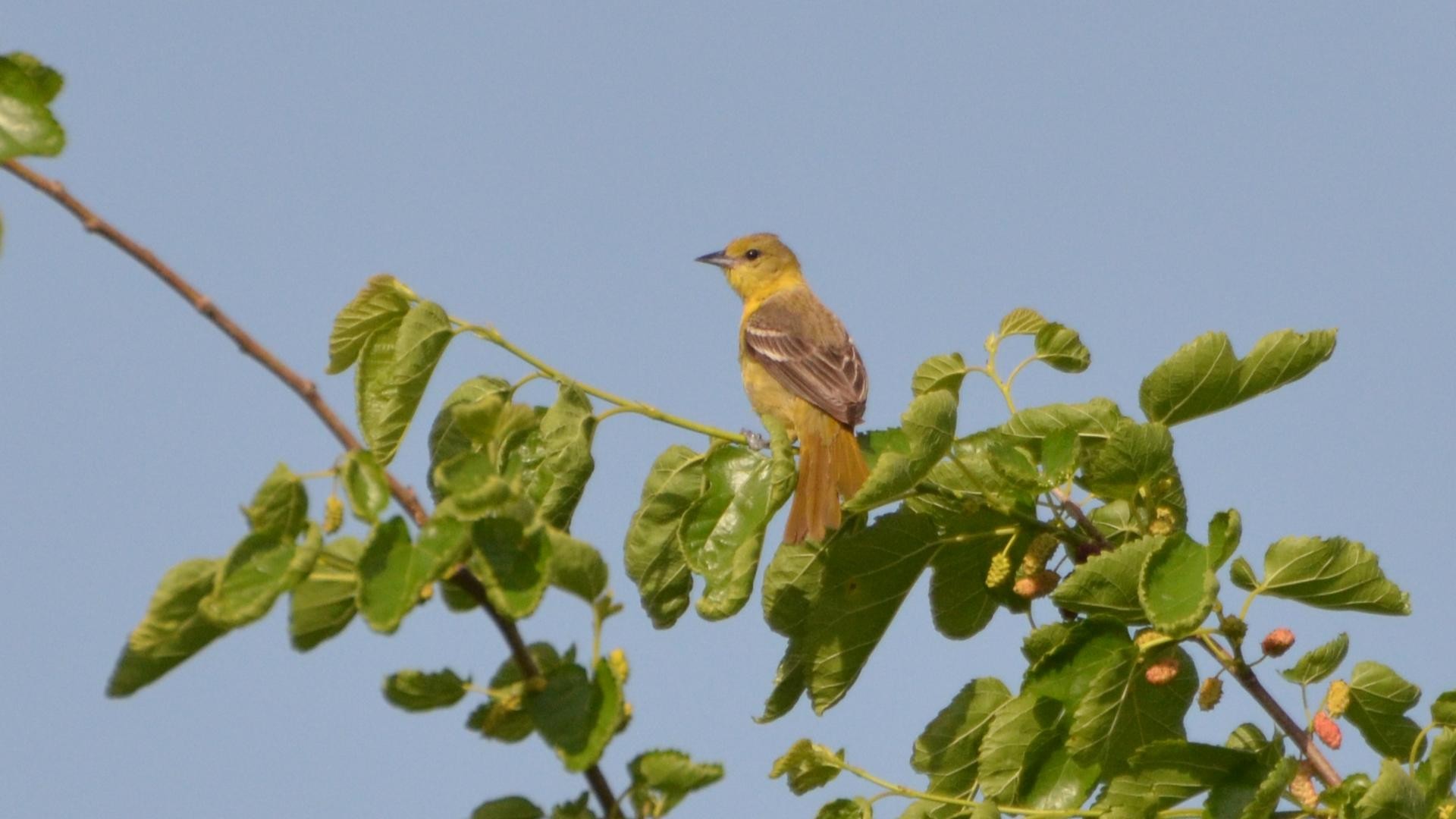Orchard Oriole
A species of New world orioles Scientific name : Icterus spurius Genus : New world orioles
Orchard Oriole, A species of New world orioles
Botanical name: Icterus spurius
Genus: New world orioles
Content
Description People often ask General Info
 Photo By Andy Reago & Chrissy McClarren , used under CC-BY-2.0 /Cropped and compressed from original
Photo By Andy Reago & Chrissy McClarren , used under CC-BY-2.0 /Cropped and compressed from original Description
This species is 6.3 in (16 cm) long and weighs 20 g (0.71 oz). The bill is pointed and black with some blue-gray at the base of the lower mandible (Howell and Webb 1995). The adult male of the nominate subspecies has chestnut on the underparts, shoulder, and rump, with the rest of the plumage black. In the subspecies I. s. fuertesi, the chestnut is replaced with ochre (Howell and Webb 1995). The adult female and the juvenile of both subspecies have olive-green on the upper parts and yellowish on the breast and belly. All adults have pointed bills and white wing bars. (Orchard orioles are considered to be adults after their second year.) One-year-old males are yellow-greenish with a black bib. 
Size
15-20 cm (6-7.75 in)
Life Expectancy
9 years
Nest Placement
Tree
Clutch Size
4 - 6 eggs
Incubation Period
1 - 2 broods
Number of Broods
12 - 14 days
Feeding Habits
Orchard Oriole primarily consumes insects, arthropods, fruits, nectar, and some seeds. They glean prey like various insects and spiders from foliage, occasionally drinking nectar from flowers or feeders. Before fall migration, fruit consumption increases. Their diet shifts to include more fruits and nectar in their Central American wintering grounds.
Habitat
Orchard Oriole thrives in semi-open landscapes rich in deciduous trees, such as riverine open woodlands, marsh edges, and agricultural regions with large trees. Habitats encompass shaded parks and areas near water bodies, with nesting in tree canopies. During winter, orchard Oriole occupies tropical forest peripheries and varied woodlands up to high altitudes, migrating between North America and northern South America.
Nest Behavior
Orchard Oriole females build the nest in about 6 days, lay eggs in a see-through bottom structure, and both parents participate in the care of young.
Nest Characteristics
Orchard Oriole's nests are built on forked branches of various trees, made with green grass, lined with grasses and soft materials. They measure 4 inches wide, 3 inches deep, with a 2.5-inch inner cup.
Dite type
Insectivorous
People often ask
General Info
Feeding Habits
Bird food type
Bird Feeder Type

Platform
Behavior
During their active season, orchard Oriole exhibit a monogamous pattern, with new mates each year. They are present in breeding territories by late spring where seasonal courtship involves complex displays like bowing and seesawing. In rich habitats, orchard Oriole may form semi-colonial nesting communities, while being solitary in other areas. Adult males display minimal territorial behavior, focused mainly on foraging areas, and coexist peacefully with various bird species, even sharing nesting trees. They show minimal interspecies aggression. Winter brings a social shift, where orchard Oriole forage in groups and partake in sizable mixed-species roosts.
Species Status
Not globally threatened.

 Photo By Andy Reago & Chrissy McClarren , used under CC-BY-2.0 /Cropped and compressed from original
Photo By Andy Reago & Chrissy McClarren , used under CC-BY-2.0 /Cropped and compressed from original